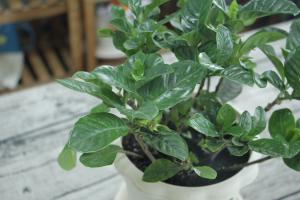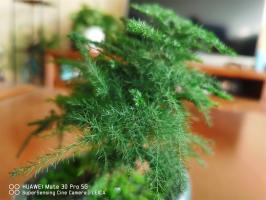Pick up some pinecones under the tree and pad the bottom of the basin so that the roots will never rot again
1. When you go out on weekends or holidays, you can take a plastic bag. When you see falling pinecones on the ground, you can directly pick up some and take them home
2. Take the pinecone home, soak it in carbendazim for 1 day, take it out and dry it in the sun, so as to achieve the purpose of sterilization and disinfection, and then pad the pinecone directly on the bottom of the basin. The pores of the pineal cone are relatively large, and padding on the basin bottom can achieve the purpose of loosening and ventilation, so as to prevent excessive watering from leading to rotten roots

3. After padding the bottom of the basin, the remaining pinecones can be broken with a small hammer, and then sealed with some water for fermentation. When the pinecones turn black, they will be fermented
4. Mix the fermented pinecone with the soil as nutrient soil. Pinecones are not only loose and breathable, but also contain pine oil, which has the function of sterilization and disinfection. It is very suitable to be used as nutrient soil

Mix some pine needles in the basin, and the flowers grow vigorously
1. Go to the community or park to pull under the pine trees, you can see a thick layer of pine needles falling on the ground
2. Take the pine needles home, soak them in carbendazim for disinfection, and kill some bacteria and insect eggs on the pine needles. You can also directly put them in the microwave oven for high-temperature sterilization, and then add some garden soil to stir them and seal them in plastic bags
3. Put the pine needles under the sun for sealed fermentation. Basically, it takes 2-3 months. When the pine needle soil turns black, it is basically fermented. The fermented pine needle soil is loose and breathable. It is very suitable for raising flowers. It can be used as nutrient soil

4. If the fermentation time is too long, you can take the pine needle directly to the bottom of the pot, and then disinfect it at home. Pine needles are loose and breathable. They are padded at the bottom of the flowerpot to divert excess water and prevent root rot
5. Of course, you can also choose to lay a layer of pine needles on the basin surface, which can not only penetrate and breathe, but also adjust the pH of the soil, and prevent the basin soil from splashing out when watering


 how many times do yo...
how many times do yo... how many planted tre...
how many planted tre... how many pine trees ...
how many pine trees ... how many pecan trees...
how many pecan trees... how many plants comp...
how many plants comp... how many plants can ...
how many plants can ... how many plants and ...
how many plants and ... how many pepper plan...
how many pepper plan...































